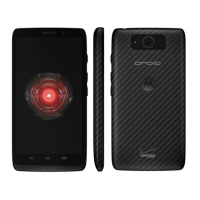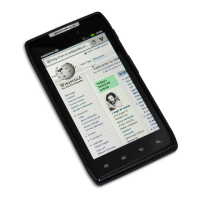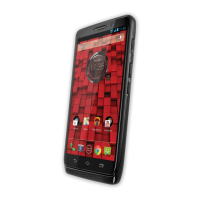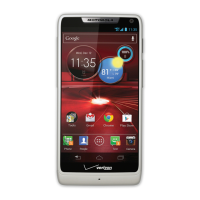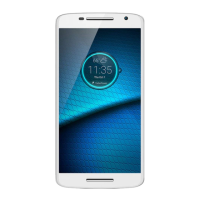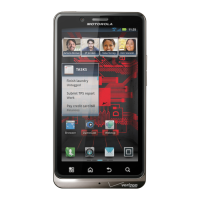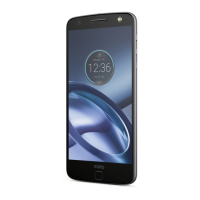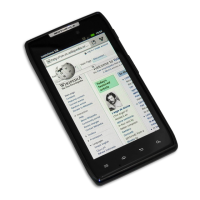63Safety, Regulatory, & Legal
• Dust and dirt:
Don’t expose your mobile device to dust, dirt, sand, food, or similar
materials.
•Cleaning:
To clean your mobile device, use only a dry soft cloth. Don’t use alcohol or
other cleaning solutions.
• Shock and vibration:
Don’t drop your mobile device or expose it to strong vibration.
•Protection:
To help protect your mobile device, always make sure that all connector and
compartment covers are closed and secure, and avoid carrying it with hard objects such
as keys or coins.
Operational Warnings
Operation al Warning s
Obey all posted signs when using mobile devices in public areas.
Potentially Explosive Areas
Potentially explosive areas are often, but not always, posted and can include blasting areas,
fueling stations, fueling areas (such as below decks on boats), fuel or chemical transfer or
storage facilities, or areas where the air contains chemicals or particles, such as grain dust, or
metal powders.
Turn off your mobile device before entering such an area, and do not charge batteries. In
such areas, sparks can occur and cause an explosion or fire.
Symbol Key
Your charger, mobile device, device display, user’s guide, or packaging may contain
symbols, defined as follows:
Symbol Definition
Important safety information follows.
Your battery or mobile device may require recycling in
accordance with local laws. Contact your local regulatory
authorities for more information.
Don’t dispose of your battery or mobile device with your
household waste. See “Disposal & Recycling” for more
information.
For indoor use only.
Radio Frequency (RF) Energy
RF En ergy
Exposure to RF Energy & Device Operation
Your mobile device contains a transmitter and receiver of RF energy. It is designed to comply
with regulatory requirements concerning human RF exposure.
For optimal device performance, and to stay within the RF exposure guidelines:
•
Hold your mobile phone normally at your ear when talking on it.
•
When using the mobile phone next to your body (other than in your hand or against your
head), maintain a distance of 1.5 cm (3/4 inch) from your body to be consistent with how
the mobile phone is tested for compliance with RF exposure requirements.
•
If you use your mobile phone with a non-Motorola accessory case or holder, make sure
the accessory maintains the required separation distance and has no metallic parts.
Follow Instructions to Avoid Interference Problems
Turn off your mobile device in any location where posted notices instruct you to do so, such
as hospitals or health care facilities.
In an aircraft, turn off your mobile device whenever instructed to do so by airline staff. If your
mobile device offers an airplane mode or similar feature, consult airline staff about using it in
flight.
Medical Devices
If you use an implantable pacemaker or defibrillator, or other medical device, consult your
healthcare provider and the device manufacturer’s directions before using this mobile
device.
Persons with a pacemaker or defibrillator should observe the following precautions:
•
ALWAYS keep the mobile device more than 20 centimeters (8 inches) from the
pacemaker or defibrillator when the mobile device is turned ON.
•
Use the ear opposite the pacemaker or defibrillator to minimize the potential for
interference.
Listening at high volume to music or voice through a headset
may damage your hearing.
Only use your charger indoors.
Symbol Definition
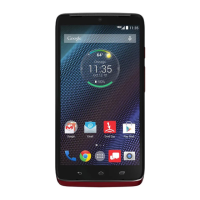
